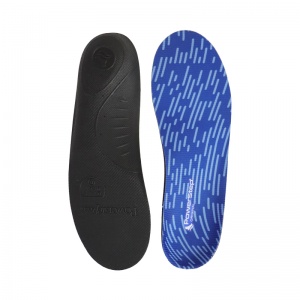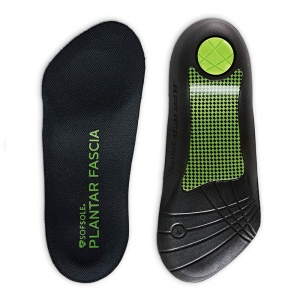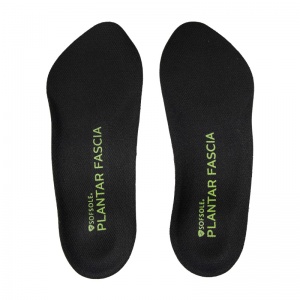What is Plantar Fasciitis?
Plantar fasciitis (also known as Jogger’s Heel) is the thickening of the plantar fascia, which is a band of tissue which runs from your heel to your toe along the sole of your foot. This happens when the plantar fascia is injured, either through a sudden injury or long term strain, hence the name Jogger’s Heel.
Under normal circumstances, the plantar fascia acts as a shock absorber and supports the arch in your foot. However, if put under repetitive strain or sudden impact it can become inflamed or irritated due to tiny tears in the tissue. It is one of the most common forms of heel pain – 80% of cases of heel pain are diagnosed as plantar fasciitis – and it can be the result of a number of causes.
What are the Symptoms of Plantar Fasciitis?
One of the main symptoms of plantar fasciitis is a stabbing pain on the bottom of your foot that is normally worse in the morning or after long periods of rest. This is due to the fact that when you are walking around during the day, your feet muscles are getting warmer, meaning that more blood is being pumped to them and they are quicker to react to strain and stress. Another indication of plantar fasciitis is pain at the front or centre of the heel bone.
What Can Cause Plantar Fasciitis?
There are several factors that can contribute to the development of plantar fasciitis — frequent jogging and running is one of the main causes of the condition, as the repetitive stretching of the underside of the foot can cause the plantar fascia to tear. In addition, people who spend a lot of time on their feet, for example factory workers and teachers, are also at risk of plantar fasciitis for the same reason. Suffering from obesity or gaining weight suddenly (such as in pregnancy) can also lead to pain of the plantar fascia, due to the excess weight and stress put upon the tissue.
A number of conditions can also lead to the development of plantar fasciitis. People with foot arch problems or a tight Achilles tendon are at greater risk of developing pain in the plantar region, due to the additional stress that these problems can place on the area. Plantar fasciitis can also be develop with age: most sufferers are between the ages of 40 and 70.
How Can Shoe Insoles Help with Plantar Fasciitis?
Choosing the right shoe insole can have a huge effect on the pain of plantar fasciitis. A shoe insole can distribute pressure on your sole more evenly, taking the weight and strain off the plantar fascia. In addition, insoles can cushion the heel to reduce the effects of pressure and impact, which in-turn reduces the pain from the heel.
Wearing shoes with the right shoe insoles as frequently as possible (ideally as soon as you get out of bed) can prevent the condition and the pain from worsening, as walking barefoot or in slippers does not provide the correct support a damaged plantar fascia needs. Non-surgical treatment for plantar fasciitis is a slow process with about four-out-of-five cases of heel pain clearing up within a year. As a result it is imperative that you wear a shoe with the correct orthotics for as long and as often as possible and to ensure that the insole is in a good condition to provide optimal performance.
If you are suffering from Plantar Fasciitis, please visit our dedicated category Insoles Plantar Fasciitis
Powerstep Original Full Length Orthotic Insoles
- Strong pair of insoles featuring medical-grade support
- Deep heel cradle supports collapsed or weak arches
- Double layer and low profile casing ensures long lasting support
- Friction reducing top fabric enhances comfort
Sof Sole Plantar Fasciitis Orthotic Insoles For Men
- Pair of insoles for plantar fasciitis pain relief
- Comfortable solution for men with plantar fascia pain
- Relieves heel spur pain thanks to gel in the heel
- Fits most footwear types thanks to a ¾ length design
Sof Sole Plantar Fasciitis Orthotic Insoles for Women
- Pair of insoles for plantar fasciitis pain relief
- Comfortable solution for women with plantar fascia pain
- Relieves heel spur pain thanks to gel in the heel
- Fits most footwear types thanks to a ¾ length design





.jpg)
.jpg)
.jpg)
.jpg)

.jpg)
.jpg)
.jpg)
.jpg)
.jpg)

.jpg)
.jpg)